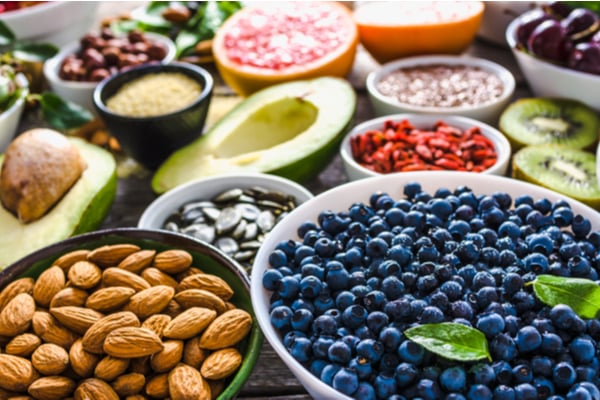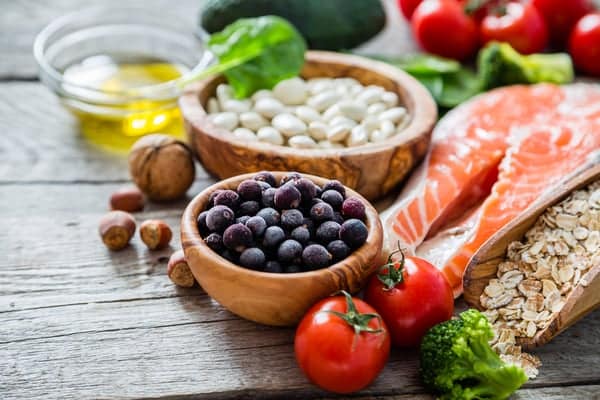Most of us already know or have heard of antioxidants and the role they play in reducing oxidative stress in the body. They do this by improving the efficiency with which the body neutralizes reactive oxygen species or, as they are commonly referred to, free radicals.
These free radicals are produced as waste products during normal cell metabolism, and when they accumulate, they can cause damage to the body. And that’s where antioxidants come in as scavengers of free radicals to help minimize or slow down the damage caused.
While most people are familiar with the common antioxidants, such as vitamins A, C, and E, very few know about lycopene—the focus of our guide. Stick around as we delve deeper into what lycopene is, its health benefits, and where you can find it.
What is lycopene
Lycopene is a phytonutrient, a plant-based nutrient that occurs naturally and belongs to the carotenoid family. Being a carotenoid, it’s responsible for the pigmentation found in some bright red to pink colored fruits and vegetables, such as tomatoes, carrots, watermelons, and apricots.
That said, lycopene is not necessarily limited to brightly-colored fruits and vegetables but can also be found in parsley and asparagus. While lycopene is technically a carotenoid with potent antioxidant activity, it doesn’t play the same role as vitamin A in the body.
As a phytonutrient, it’s an exogenous antioxidant found in organisms that photosynthesis, such as plants and algae. In these organisms, it’s an intermediate in the production of a variety of other carotenoids, such as beta-carotene, which plays a crucial role in other plant processes.
Lycopene owes its deep red color to its unique chemical structure. As a result, it’s been approved as a food color in most first-world countries, including the US, New Zealand, Europe and Australia.
Because of its hydrophobic nature(it’s insoluble in water), it’s often the main culprit in staining your cookware and giving it that orange-red color. One of the richest sources of lycopene is a tomato; in fact, one serving contains about 4–10 mg of lycopene.
What’s more, over 80 percent of North Americans get lycopene from tomato-derived products, including tomato paste, ketchup, tomato juice, and sauce. While health and nutrition experts recommend avoiding processed products, this is one of the few exceptions where it’s advisable.
That’s because, in its natural state, lycopene isn’t readily absorbable by the body. However, using heat to process it, like in the production of ketchup, converts it into a form that’s readily absorbed by the body.
Health benefits of lycopene
It’s a potent antioxidant
The primary role of lycopene in the human body is to prevent oxidative reactions, thereby reducing the number of free radicals produced by cells.
When the body is unable to remove free radicals efficiently and they accumulate, this can lead to oxidative stress, which is harmful to the body.
Oxidative stress has been linked to a variety of chronic diseases, such as cancer, stroke, heart disease, diabetes, immunodeficiency, and Parkinson’s, among other inflammatory conditions.
Studies have shown that lycopene is a potent antioxidant agent and can help reduce the number of reactive oxygen species in the body. As a result, it confers some level of protection against oxidative stress.
What’s more, laboratory and animal experimentation has shown that lycopene can help protect the body against environmental agents, including herbicides, fungi, and pesticides as well as MSG (monosodium glutamate).
Lycopene prevents cancer
According to a 2018 WHO report, approximately 9.6 million people die every year from cancer-related deaths. Other than being a powerful antioxidant, lycopene also helps prevent inflammation as well as cancer.
Researchers conducted multiple epidemiologic studies—prospective and retrospective—and found enough scientific evidence to show that consuming lycopene-rich tomatoes helps reduce the risk of developing prostate cancer.
These studies are backed by numerous laboratory methods that have all demonstrated the anti-cancerous and cancer-prevention properties of lycopene in a variety of cell types, especially in prostate cancer.
Lycopene’s anti-cancerous effects include inducing cell apoptosis (cell suicide) and preventing metastasis (the migration of cancer cells to other sites in the body), among others.
Because it accumulates in prostate cells, specifically in the nucleus, it helps prevent oxidative damage to genetic material.
It improves bone strength
Studies have shown that supplementing your diet with the antioxidant lycopene benefits bone health. That said, the mechanism lycopene uses to influence bone metabolism inside the body is still not clear.
However, in a twelve-week experimental lab animal study involving approximately 264 Wistar rats, it was observed that treatment with lycopene served to suppress the regular rate of bone breakdown and reformation (resorption and replacement).
This animal model, while far from perfect, means that it’s theoretically possible to improve bone microarchitecture and restore strength to bones. In another study investigating the effects of lycopene on rat femur bone loss, it was shown that lycopene does influence bone metabolism.
In fact, researchers demonstrated that a regular dose of about 10 mg of lycopene each day for nearly two months was enough to minimize femur bone loss as well as reduce resorption.
Promotes cardiovascular health
Cardiovascular conditions are among the leading causes of death in developed countries for a variety of reasons, including thrombosis, inflammation, and oxidative stress.
Most health practitioners recommend chowing down on vegetables and fruits since they’re all great sources of carotenoids. Lycopene is one of the main phytonutrients that are readily available in a variety of fruits and vegetables, especially tomatoes and their products.
Lycopene helps reduce the risk of developing cancer and cardiovascular diseases by reducing cholesterol levels, oxidation, controlling inflammation, and inducing cell suicide.
What’s more, it’s a phytonutrient that’s known for managing blood pressure as well as preventing other heart conditions, such as myocardial ischemia and atherosclerosis, among others.
What’s more, there’s enough scientific evidence to show that consuming more than 12 mg of lycopene every day is enough to decrease blood pressure. This is especially true among Asians or other populations who have a higher blood pressure baseline.
Provides sunburn protection
It’s a well-known fact that carotenoids play a major role in protecting the skin from UV radiation. After conducting skin biopsies and studying blood samples of twenty-seven individuals, researchers found that beta-carotene and lycopene take up a massive chunk of space in both plasma and skin.
Furthermore, compared to plasma, the skin had higher levels of carotenoids.
It highlights the photo-protective role of hydrocarbon carotenoids, such as lycopene, in guarding against UV radiation. However, since it’s quickly depleted upon UV irradiation, then it’s safe to say that it plays a protective role.
Moreover, according to this twelve-week randomized control study of twenty women, tomato paste rich in lycopene provides adequate protection from acute, as well as long-term, photodamage.
{{cta(‘6dd1507c-935a-4c96-bdb3-c6966eeeeae8’)}}
Other health benefits of lycopene
Improve vision: thanks to its potent antioxidant properties, lycopene has been proven to be useful in the therapy against eye cataracts and age-related macular degeneration or (AMD).
Reduce pain: damaged peripheral nerves cause an increase in the production of TNF (tumor necrosis factor), which consequently leads to the downregulation of Cx43 spinal astrocyte.
Researchers believe lycopene can alleviate the pain, helping restore regular Cx43 expression.
While the health benefits of lycopene seem like they’re heaven-sent, they’re still in the preliminary stages of research and further testing will be necessary.
Sources of lycopene
When it comes to finding the right fruits and vegetables rich in lycopene, the general rule of thumb is that if it has a red-pink color, then it has lycopene—except for cherries and strawberries.
As we’ve already mentioned, most people get their lycopene fix from tomatoes, including products such as paste, juice, ketchup, and sauce. If you’re looking to get higher lycopene concentrations from your fruits/vegetables, then consider sun-drying them.
When processing tomatoes to make juice, ketchup, sauce, etc., you usually use heat, which converts lycopene into a readily absorbable form for the body.
That said, don’t forget they are hydrophobic or fat-soluble, so you want to chase them down with some butter or oil. Some of the other sources of lycopene include asparagus, mango, carrots, papaya, grapefruit, gac, red cabbage, and watermelon.
Side effects of lycopene
Generally speaking, lycopene doesn’t have any adverse side effects except for the rare case of lycopenodermia—skin discoloration. It’s not as bad as it sounds because it’s an utterly nontoxic reaction and will often go away in a couple of weeks once you stop consuming lycopene.
However, if you overdo it, then it’s highly likely that you may experience some adverse reactions, including diarrhea, vomiting, stomach cramps or pain, flatulence, and a loss of appetite.
Bottom line
From being a potent antioxidant to preventing cancer to improving bone strength to reducing pain to improving vision, lycopene comes with a laundry list of health benefits that would make anyone become a tomato convert.
{{cta(‘e9b8d1dd-e503-4aed-a9a7-fbf9179ac12b’)}}



